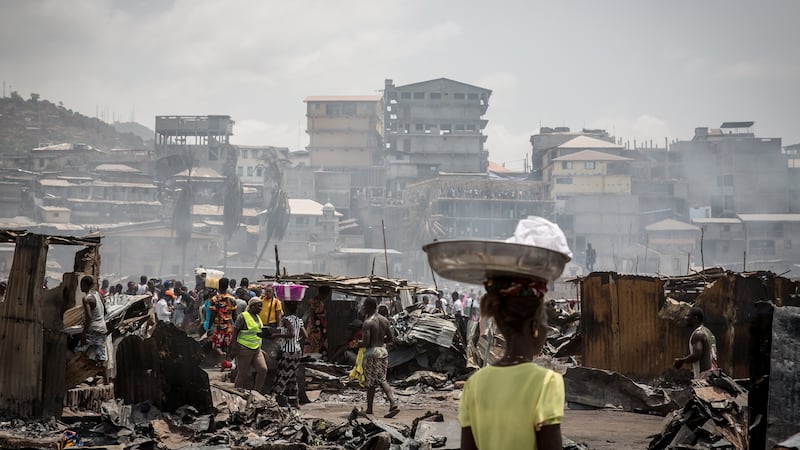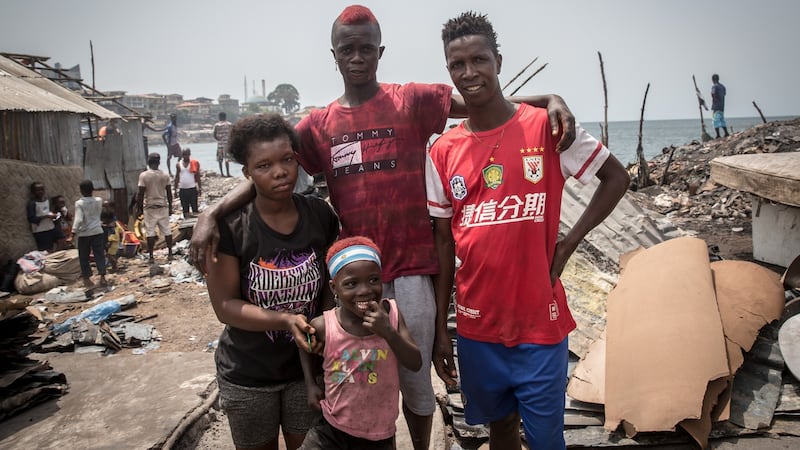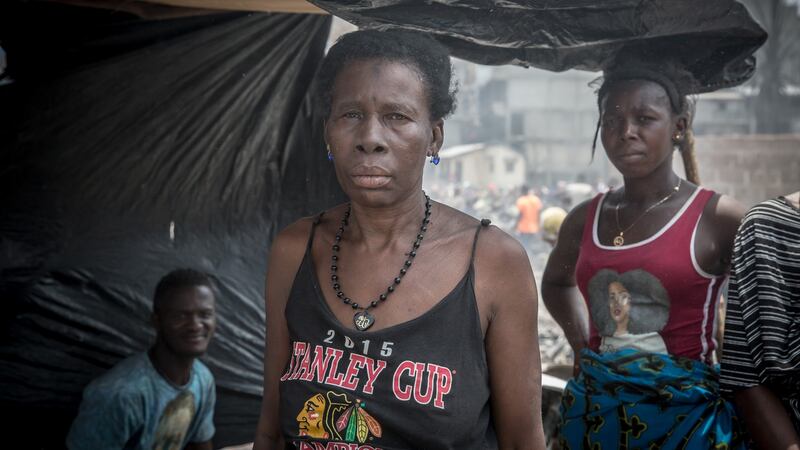The day after a devastating fire in a Freetown slum, which displaced as many as 5,000 people, residents were reduced to selling the ashen remains of their homes for scrap metal.
Yealimamy Bangura piled up what was left of her roof and walls, before encouraging her six children to beat it into shape. She would sell it for 1,500 leones per kilo (12c) – around 35,000 leones (€2.91) in total – providing something to sustain them as she contemplated what to do next.
The fire broke out at about 6pm on Wednesday, quickly tearing through Susan’s Bay, which was packed with homes and people, while fire services were effectively unable to respond. It was visible from across the city.

“The entire community has been burnt to the ground,” said Freetown’s mayor, Yvonne Aki-Sawyerr, in a statement posted to Facebook. “Once again, there was no access for the fire service. A six-storey building under construction . . . blocked what access there previously would have been.”
“Disaster risk reduction cannot happen without effective urban planning and a building permit regime which is focused on reducing environmental and man-made risks,” she added. “Please join us in praying for the victims.”
Survivors described sprinting and screaming as they fled the flames, some carrying whatever belongings they could and others only the clothes they wore. Residents close to the sea boarded fishing boats, rowing out from the coast to escape.

“I couldn’t do anything, I just grabbed all the children to secure their life. It was commotion,” said Isatu Kabia (60). “I have no idea what caused the fire. The fire brigades couldn’t get down here and it burnt for hours. “
Kabia lived across 19 rooms with more than 60 relatives. Everything was destroyed. On Thursday afternoon, they crouched together under black plastic bags, held up by wooden sticks. One woman displayed burns across her legs, saying she had been treated by a medical worker that morning.
“I have no clothes. I am trying to ask for help from the government,” Kabia said. “I never imagined something like this would happen.”
According to Sierra Leone’s Red Cross Society, more than 80 people were injured but no one was thought to have died.

‘Disaster-prone communities’
“This is one of the disaster-prone communities,” said Sinneh Mansaray, the acting director for the Sierra Leonean government’s disaster management department. “It’s the way the houses are built. Everything is clustered. We must give [them] shelter, provisions, food. What happens at night, where do they sleep?”
Mansaray was directing his staff and residents through a process where they would register everyone who lost property.
They started at 8am, and reached the halfway point by 2pm. Later, charity Save the Children would distribute food and water, while aid agencies and the government met to discuss what could be done.

Mansaray said this was the biggest recent disaster in Sierra Leone, besides the 2017 mudslide, which killed at least 1,100 people, and the 2014-15 Ebola outbreak.
Ibrahim Sesay, who works as a medical officer in prisons, said he believed the fire started in one home, but the owner panicked, shut the door and ran away.
“I thought it was a minor thing, it wouldn’t reach this area because of the distance,” he said. “I thought they’d rescue us but the wind was so high they were unable to stop it.”
Along with his wife, he managed to save a lot of their belongings by putting them close to the sea, where there was no construction. As smoke spread, he witnessed people fainting and collapsing. “They were totally hopeless,” said Sesay.
His extended family, of 24 people, lived across eight rooms. Among them were his wife and five children. “Before this incident we lived a peaceful life,” he said. “We want the government to help us. Fires keep happening. They should move us to a conducive atmosphere where I can live a happy life. A community where our children can grow up, get the basic facilities.”
"Where I'm presently standing is my house," said Idrissa Turay (23), who lived next door to Sesay with his wife, brother and child. He was on a cement floor surrounded by ash and metal. He said he had lived there his whole life.
“I have nothing [now]. I can’t do anything unless someone helps me,” Turay said. “I think the government should do something but they won’t.”









